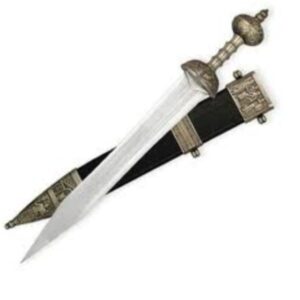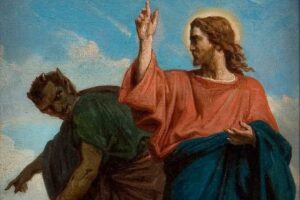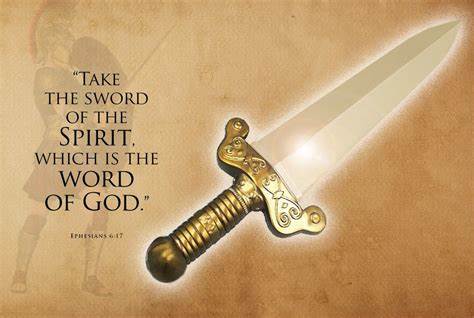Preaching About The Sword of the Spirit
Preaching About the Sword of the Spirit
Up to this point in our consideration of the Armor of God we have looked at defensive weapons. The belt, the breastplate, the shoes, the helmet and the shield all are protection for us as we engage the Enemy in battle. In this post we turn to consider preaching about the sword of the Spirit to your people, and note that the sword is an offensive weapon.
Two Kinds of Swords

Broadsword

Legionnaire’s sword
There were two kinds of swords at that time. The person using a broadsword would seek a knockout blow with a heavy, two-handed sword. That’s not the kind of sword Paul is talking about here. When preaching about the sword of the Spirit, he mentions the typical sword for the Legionnaire. It was about 24 inches long, some even shorter than that. A soldier used this sword for close-in, man-to-man fighting. The soldier would thrust the sword out from the side of the shield. You could only use it if you in your enemy’s face.
Preaching About the Right Kind of Sword
Paul encourages us to use the Sword of the Sprit, and the first thing to notice, is that this sword is the sword of the Spirit; the Holy Spirit gives it the power we need in the battle, and the Holy Spirit leads and empowers us in the battle.
Secondly, this sword, “…is the word of God,” and we need to clarify what that means. There are two words in the original Greek language of the New Testament that translators write as “word” in English. The one most often used is logos. In John 1:1, where we read: “In the beginning was the Word (Logos), and the word was with God, and the word was God.”
Here John uses the word logos. A simple definition of logos is that the word represents all the revelation of God about himself, and it culminates in Jesus as the Word of God. Here is the way the dictionary defines it: see link here.
Logos is not the word that Paul uses here when he says that this is the Word of God. Rather, the word he uses is rhema, a”word” that describes taking the logos and making it applicable to a specific situation.
The Best Example of Using the Sword of the Spirit
 The best example of using the rhema is Jesus himself. Here is the account of his temptation, as recorded by Matthew in chapter 4.
The best example of using the rhema is Jesus himself. Here is the account of his temptation, as recorded by Matthew in chapter 4.
Jesus Uses the Sword of the Spirit
4 Then Jesus was led by the Spirit into the wilderness to be tempted[a]by the devil. 2 After fasting forty days and forty nights, he was hungry.3 The tempter came to him and said, “If you are the Son of God, tell these stones to become bread.”
4 Jesus answered, “It is written: ‘Man shall not live on bread alone, but on every word that comes from the mouth of God.’[b]”
5 Then the devil took him to the holy city and had him stand on the highest point of the temple. 6 “If you are the Son of God,” he said, “throw yourself down. For it is written:
“‘He will command his angels concerning you,
and they will lift you up in their hands,
so that you will not strike your foot against a stone.’[c]”
7 Jesus answered him, “It is also written: ‘Do not put the Lord your God to the test.’[d]”
8 Again, the devil took him to a very high mountain and showed him all the kingdoms of the world and their splendor. 9 “All this I will give you,” he said, “if you will bow down and worship me.”
10 Jesus said to him, “Away from me, Satan! For it is written: ‘Worship the Lord your God, and serve him only.’[e]”
Conclusion
In the next post we’ll look at this more closely, and how it applies to your life and mine.



